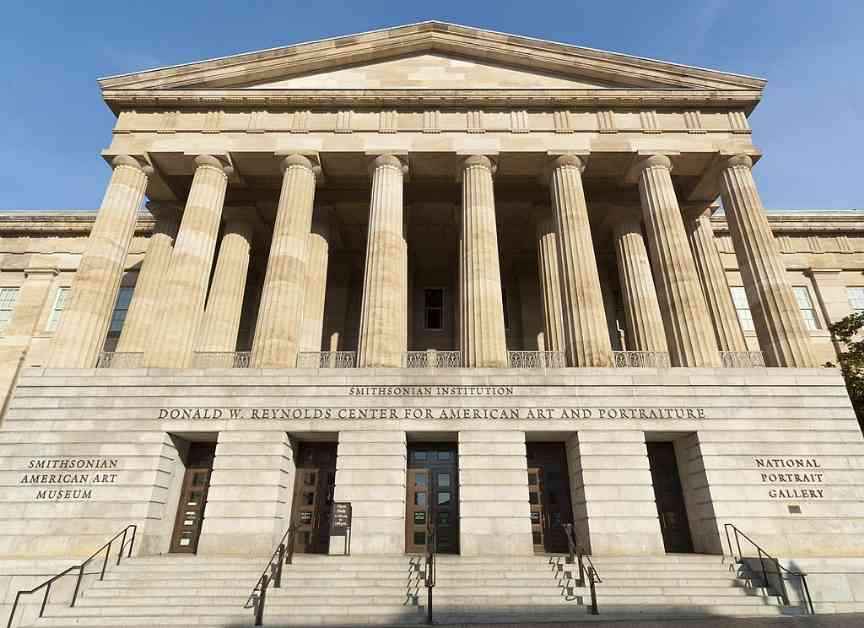The Art Museum of the Americas, located within the Organization of American States (OAS), recently made headlines for canceling two groundbreaking exhibitions by Black, queer artists. The decision to scrap these shows came in the wake of a crackdown on diversity, equity, and inclusion (DEI) initiatives under the Trump administration.
One of the canceled exhibitions, titled “Nature’s Wild with Andil Gosine,” was poised to take center stage at the museum this week. The solo show, inspired by the artist’s 2021 book “Nature’s Wild: Love, Sex and Law in the Caribbean,” delved into themes of art, activism, and homosexuality in the context of religion. Andil Gosine, the mastermind behind the exhibition, poured three years of meticulous planning into transforming three galleries to showcase his work. Unfortunately, the exhibition was abruptly called off without any clear explanation, leaving both artists and attendees baffled.
In a candid interview with Hyperallergic, Gosine expressed his deep disappointment over the cancellation, emphasizing that the exhibit was tailor-made for the museum space. The artist’s poignant words shed light on the profound personal and artistic investment he had poured into the project, only to see it unravel due to unforeseen circumstances.
The abrupt closure of the exhibition has raised questions about the underlying reasons behind the decision. While the museum has remained tight-lipped about the specifics, reports suggest that the General Secretariat of the OAS played a pivotal role in ordering the exhibition’s termination. Gosine suspects that the controversial labeling of the exhibit as a “queer show” may have played a role in its cancellation, hinting at a broader trend of censorship and suppression of marginalized voices in the art world.
The cancellation of Gosine’s exhibition was not an isolated incident, as another show curated by Cheryl D. Edwards, featuring works by African-descended Caribbean and American artists, suffered a similar fate at the hands of the Trump administration. The administration deemed the exhibition a “DEI program and event,” prompting its abrupt cancellation just days before its scheduled opening. The parallel cancellations underscore a troubling pattern of stifling artistic expression and diversity under the guise of political agendas.
Financially backed by artist grants, the WorldPride organization, and the Canadian permanent mission to the OAS, Gosine’s exhibition represented a beacon of hope for marginalized voices in the art world. Yet, the cancellation of the show serves as a stark reminder of the power dynamics at play in the art world, where political interests often dictate the fate of creative expression.
The larger implications of these cancellations extend beyond the realm of art, reflecting a broader shift in US foreign diplomacy priorities under the Trump administration. By prioritizing the suppression of so-called “enemy propaganda,” the administration has inadvertently stifled artistic freedom and marginalized voices in the process. The appointment of Leandro Rizzuto Jr. as the US ambassador to the OAS further underscores the administration’s overarching agenda to exert control over cultural institutions and artistic narratives.
In the face of mounting challenges and censorship, artists and cultural critics like Deborah Root have voiced concerns about the chilling effect these cancellations may have on the creative community. Root, who collaborated with Gosine on the exhibition, warned of a potential trend towards self-censorship among artists striving to conform to conservative standards in order to secure exhibition opportunities. The looming threat of artistic homogenization and stifled creativity looms large in the wake of these troubling developments.
As the dust settles on these controversial cancellations, the art world grapples with a critical question: how can artists navigate the shifting landscape of political influence and censorship while staying true to their artistic vision? The events surrounding the canceled exhibitions at the Art Museum of the Americas offer a sobering reminder of the delicate balance between artistic expression and political interference, underscoring the need for vigilance and solidarity in safeguarding creative freedom for all.












